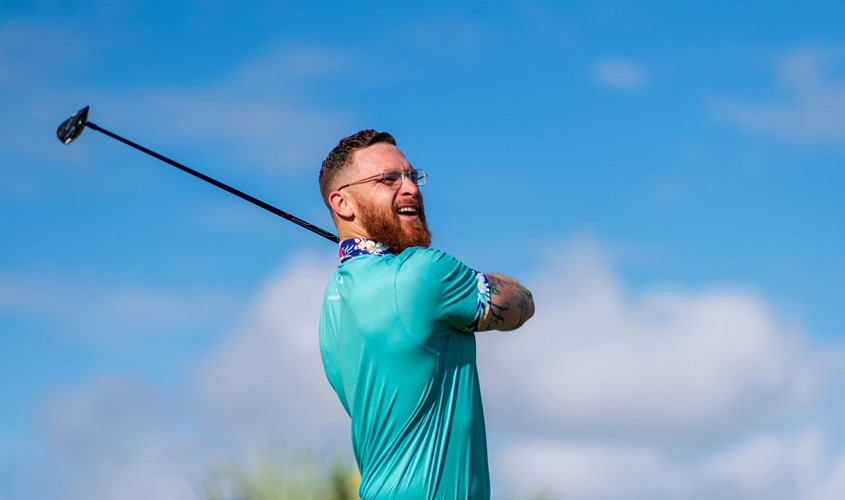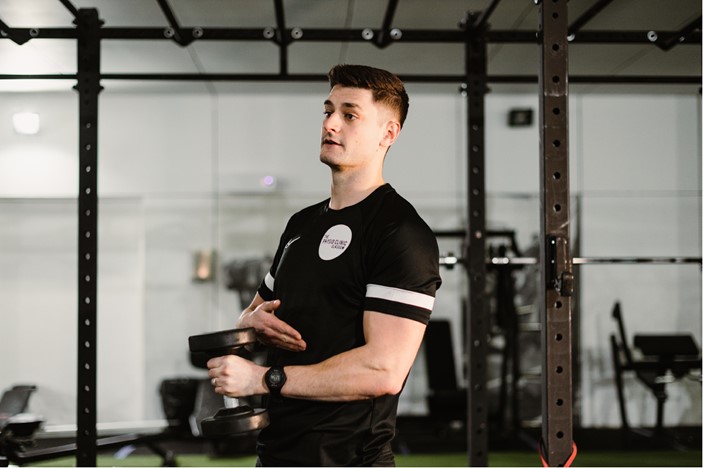Drive away your Golfer's elbow with The Physio Clinic Glasgow
Published: 17 November 2023

Drive away Golfer's elbow with the Physio Clinic Glasgow
Golfer’s elbow, also known as medial epicondylitis, is a painful condition caused by overuse of the muscles and tendons on the inside of the elbow. If you feel pain and tenderness on the inner side of your elbow and forearm, you may be suffering from this common injury.
At our physiotherapy clinic, we take an active rehabilitation approach to treating golfer’s elbow. Rather than just telling you to rest, we create customized programs to reduce your pain and restore normal function while keeping you moving.
Read on to learn all about golfer’s elbow, its symptoms, causes, and how physiotherapy with targeted exercises and education gets you feeling better fast.
What is Golfer’s Elbow?
Golfer’s elbow involves inflammation of the tendons that attach the muscles of your forearm to the bony prominence on the inside of your elbow called the medial epicondyle. It’s essentially the same condition as tennis elbow, but just affecting the opposite side of the elbow.
The medical term for golfer’s elbow is medial epicondylitis. It’s caused by overuse leading to small tears and damage within the flexor tendons of the forearm. As the tears accumulate, they cause pain focused on the inside of the elbow.
![]()
Common Symptoms of Golfer’s Elbow
Some common symptoms of golfer’s elbow include:
- Pain and tenderness focused on the inner elbow and forearm
- Discomfort or burning pain when using the affected arm and hand
- Pain when gripping objects or flexing the wrist
- Stiffness and reduced range of motion in the elbow and wrist
- Weakened grip strength
- Sensation of weakness in the forearm
- Flare ups of pain when lifting, grasping, or reaching
- Hurting or soreness when pressing on the inside of the elbow
If these inner elbow symptoms persist, especially during activity involving use of your hand and wrist, it likely indicates golfer’s elbow. Contact us for proper diagnosis and treatment.
What Causes Golfer’s Elbow?
Like tennis elbow, golfer’s elbow often stems from repetitive strain to the elbow area. Activities requiring ongoing gripping, bending of the wrist, lifting, and/or repetitive arm motions can overwork those inner elbow flexor muscles and tendons. Common culprits include:
- Golf - especially poor swinging technique
- Racquet sports - tennis, badminton, squash
- Weightlifting and strength training
- Manual labor jobs - painting, plumbing, manufacturing
- Extensive computer and mouse use
- Music playing - guitar, violin, cello
- Cooking and food preparation
Sometimes arthritis or previous injuries in the elbow can increase your risk as well.
Our Active Rehab Approach to Golfer’s Elbow Treatment
The good news is golfer’s elbow responds extremely well to active rehabilitation from our skilled physiotherapists. We’ll work with you to create a customized program focused on targeted exercises, hands-on techniques, and education to restore pain-free function while keeping you as active as possible.
Active rehab techniques we use include:
- Specific stretches and strengthening exercises for the wrist, forearm, and elbow. This rehabilitates the affected muscles and tendons.
- Manual therapy like massage or joint mobilizations to improve flexibility and motion in the elbow and wrist.
- Taping or bracing to support the elbow during activity and exercise.
- Education on proper activity modification, movement patterns, and lifting mechanics to prevent re-injury.
- A graded return to sport or activity program once healed to ensure you regain full strength.
The combination of techniques used will be tailored to your unique case and goals.

Benefits of Physiotherapy for Golfer’s Elbow
Some key advantages of choosing physiotherapy’s active rehab approach include:
- It keeps you actively involved in your recovery rather than just being passive.
- Allows you to keep using and moving your elbow during rehab.
- Avoids long periods of immobilization that can increase stiffness.
- Provides symptom relief relatively quickly.
- Teaches you how to strengthen your arm and prevent future flares.
- Helps you fully recover range of motion and strength.
- Completely non-invasive with minimal side effects.
Take Control of Your Recovery!
Don’t let golfer’s elbow pain persist and potentially turn into a chronic issue. Take control of your recovery and book an appointment at our clinic today. Our physiotherapists will assess your condition and get you started on a customized active rehab program to have you pain-free and moving confidently again as fast as possible.
Just click 'book appointment' on the website and we'll get you started on your recovery.
Arran and Robb
The Physio Clinic Glasgow